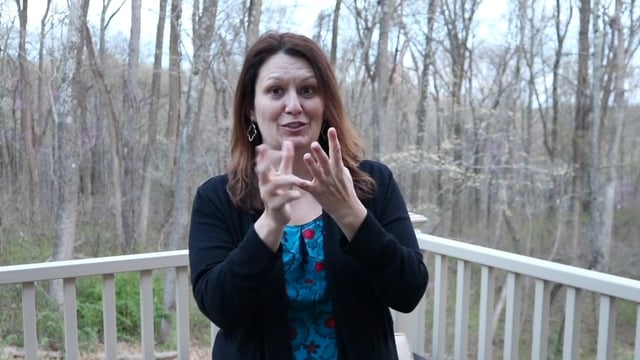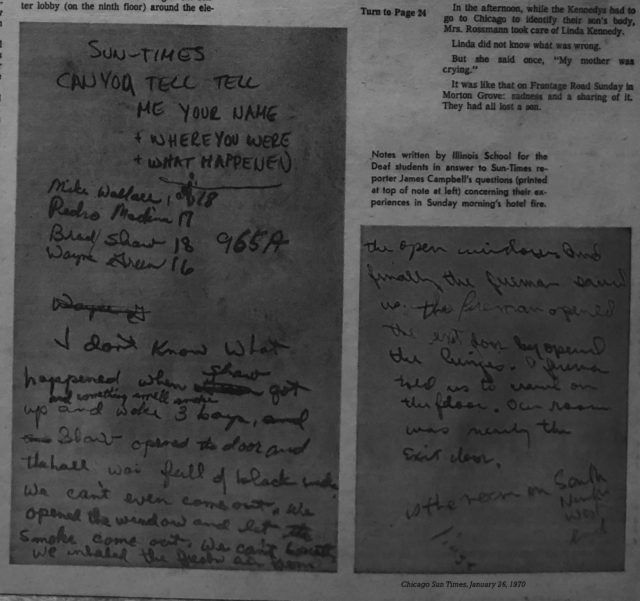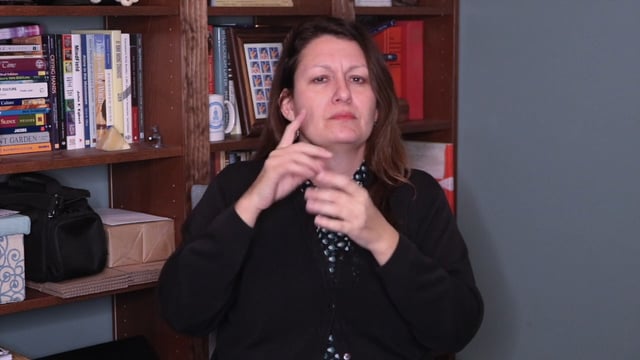Originally appeared in Silent News, May 2001.
“I give my life to free deaf people from hearing slaves” was the message written on James Levier’s white mini-van as he paced the parking lot of a grocery store in Scarborough, Maine, with a hunting rifle in hand.
Last month, yet another incident drew attention to the Governor Baxter School for the Deaf (GBSD) located in Falmouth. Levier, 60, paced with a rifle outside of a Shop ‘N’ Save grocery store. 200 people hid in the back of the store during the incident.
“Should I trust lawmakers?” he wrote on his van.
Governor Baxter has been plagued with proven accusations of sexual and physical abuse dating back to the 1950s. The state, in March, determined that victims of the sexual abuse would not be compensated due to a number of reasons, including a lack of specific definition of what ‘abuse’ consisted of.
Levier attended GBSD from the ages of 7 to 18, said Josie Little, Levier’s niece. “James was the first person to ever testify on the abuse that took place in front of legislature. He had been fighting for years to have things changed and the people punished for what they did.”
However, charges could not be pressed due to a statute of limitations. Levier was part of A Safer Place, a support group for victims of abuse at GBSD that meets monthly.
In an interview with News 8 WMTW (Portland) TV in June 1999, he said, “Deep inside, I feel like a prisoner. I feel like something’s controlling me, keeping me.”
The hopelessness that Levier apparently felt was what drove Levier to that parking lot on March 16, says his family.
Just exactly what happened in that Shop ‘N’ Save parking lot is where the differences in accounts begin to emerge.
The Maine Attorney General’s office released a report that labels Levier’s shooting by the Scarborough police as justifiable. “Several officers from Scarborough, the State Police, and other area departments quickly contained Mr. Levier to a confined area of the parking lot, while other officers evacuated shoppers and employees from the mall stores and other businesses, including a nearby day-care center. Attempts to persuade Mr. Levier to relinquish his rifle were unsuccessful, although it appeared to several officers that Mr. Levier understood the repeated commands to do so. On several occasions during the standoff, Mr. Levier shouted for the officers to shoot him,” the report outlined.
Levier’s niece Little explained, “He knew he had to bring something that would get attention, so he brought his rifle. He never threatened anyone in the parking lot or the stores. He stayed next to his van and passed back and forth, holding his rifle up in the air. He never fired his gun at all. The police came and after about a half hour, they called in the interpreter who was hearing, she knew James for about 12 years.”
The report continued, “The police were successful in getting an interpreter qualified in American Sign Language to the scene, but her attempts at communicating with Mr. Levier were unsuccessful because of the distance that had to be maintained between the two for her own protection. It was while the police were attempting to devise a plan that would safely allow for the interpreter to get closer to Mr. Levier that Levier threatened to shoot at a group of officers and was shot.”
Little disagrees with this. “They would not let [the interpreter] get close enough to talk with James. He did not know she was there. The police kept asking her what is he saying but she could not tell them even with looking through binoculars – she was that far away.”
The report also said, “Approximately one hour after the stand-off began, Mr. Levier advanced to within approximately 60 feet of a group of officers. Seconds later he assumed a shooter’s stance, raised the rifle to his shoulder, and sighted in on the group of officers.”
According to the attorney general’s office, Levier was armed with a .30-.30 caliber rifle that had a ballistic velocity that could easily penetrate vehicles. After the shooting, the state found that his rifle’s hammer had been fully cocked and his rifle was loaded with several live rounds, including one in the chamber.
Police initially claimed that Levier was the first to shoot, but several individuals later disputed this, including the interpreter and witnesses. A Scarborough officer’s single shot was the first, followed in quick succession by three rounds from a second officer, and then a single shot from each of two other officers.
“The police said that his gun was loaded, but the interpreter said he was cocking his rifle while he was marching – which I have been told kicks out the bullets. She says he did this about seven times while she was there, and that one of the officers told her he had done this a few times before she got there…if this is true, he would not have had anything in his rifle. This was also a one-shot rifle, so even if he had shot, they would have known he was done,” said Little.
Indeed, after investigating the matter further, the attorney’s office found that Levier never once fired his weapon. “The impression of several witnesses who told investigators that Mr. Levier discharged his weapon was attributed to the combination of hearing the sound of Trooper Sperrey’s shot, accompanied at the same moment by the observation of Mr. Levier’s gun shoulder recoiling, which was a result of being struck by the shot,” the report said.
With these details in place, it is quite difficult for Levier’s family to understand exactly why things happened the way they did. The family also learned of Levier’s death through secondhand information. Little said, “The family was never notified at all, [even though] the police had James’s daughter’s number on file because she was who they called when they arrested him [previously for an unrelated charge]. The family found out of his death on the news, and they showed him being shot on the 10:00 news.”
Sara Treat is a licensed counselor who works with A Safer Place. “It was well known that he was depressed a lot and felt a lot of pain from his past. We can never know exactly what he was thinking or going through the day he went to Shop ‘N’ Save,” she said in a recent talk at the New England Mental Health and Deafness conference in Maine.
“It seemed clear though that he wanted to get a message out that would wake people up about the Deaf community and the abuses and discrimination that they suffer. That day he apparently thought that by dying, he could to that,” Treat added.
The family of James Levier is still reeling from the chain of events. Little said, “There is no way to justify this in my eyes. We have to make sure this does not happen to another person.”
Perhaps, most fitting to this story is a note that Levier left on his door before he drove to the shopping plaza. In the note, he wrote, “I would rather die than suffer a slave to a hearing world. Please protect my deaf friends, family and children, etc. I go to war with lawmakers fail to protect me my rights. The end. James Levier.”
Copyrighted material. This article cannot be copied, reproduced, or redistributed without the written consent of the author.




